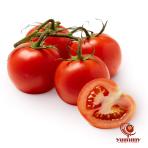Purchase and price of tomato paste in dehydrator types
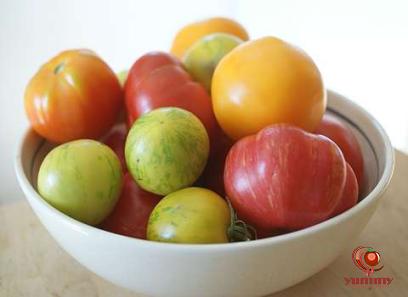
Tomato paste is a versatile ingredient that adds depth, flavor, and richness to a variety of dishes. Making your own tomato paste at home allows you to control the quality of the ingredients and tailor the flavor to your liking. In this comprehensive guide, we will explore the process of making tomato paste in a dehydrator, from selecting the best tomatoes to storage and usage tips. Let’s dive in and unleash the full potential of this pantry staple. Choosing the Right Tomatoes: When it comes to making tomato paste, using the right tomatoes is key. Look for ripe, meaty tomatoes with a deep red color and firm texture.

.
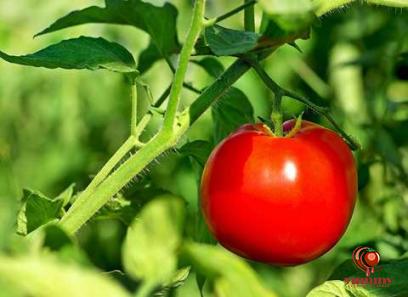 Roma tomatoes, also known as plum tomatoes, are a popular choice for making tomato paste due to their low water content and rich flavor. However, you can experiment with different tomato varieties to find the one that suits your taste preferences. Preparing the Tomatoes: Before you start dehydrating your tomatoes, it’s essential to prepare them properly. Wash the tomatoes thoroughly and remove any stems or blemishes. Some recipes recommend blanching the tomatoes before dehydrating them to remove the skins easily. To do this, score a small “X” at the bottom of each tomato, blanch them in boiling water for about 30 seconds, then transfer them to an ice bath. The skins will peel off effortlessly, leaving you with smooth, skinless tomatoes ready for dehydration. Dehydrating the Tomatoes: Once your tomatoes are prepped and ready, it’s time to dehydrate them. A dehydrator is an excellent tool for this job, as it allows you to dry the tomatoes evenly at a consistent low temperature.
Roma tomatoes, also known as plum tomatoes, are a popular choice for making tomato paste due to their low water content and rich flavor. However, you can experiment with different tomato varieties to find the one that suits your taste preferences. Preparing the Tomatoes: Before you start dehydrating your tomatoes, it’s essential to prepare them properly. Wash the tomatoes thoroughly and remove any stems or blemishes. Some recipes recommend blanching the tomatoes before dehydrating them to remove the skins easily. To do this, score a small “X” at the bottom of each tomato, blanch them in boiling water for about 30 seconds, then transfer them to an ice bath. The skins will peel off effortlessly, leaving you with smooth, skinless tomatoes ready for dehydration. Dehydrating the Tomatoes: Once your tomatoes are prepped and ready, it’s time to dehydrate them. A dehydrator is an excellent tool for this job, as it allows you to dry the tomatoes evenly at a consistent low temperature.
..
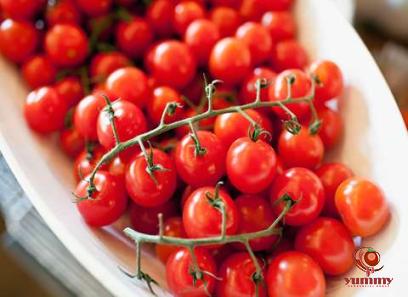 Slice the tomatoes into thin, uniform pieces to ensure even drying and place them on the dehydrator trays in a single layer. Depending on the dehydrator model and tomato thickness, it can take anywhere from 8 to 24 hours to fully dehydrate the tomatoes. Monitoring the Dehydration Process: While dehydrating the tomatoes, it’s crucial to monitor the process to prevent over-drying or under-drying. Check the tomatoes periodically and rotate the trays if necessary to ensure even drying. The tomatoes are ready when they are leathery and dry to the touch, with no moisture remaining. Properly dehydrated tomatoes should be flexible but not sticky, indicating that they have reached the desired consistency for making tomato paste. Grinding the Dehydrated Tomatoes: Once the tomatoes are fully dehydrated, it’s time to turn them into tomato paste. Grind the dried tomatoes in a food processor or blender until they form a fine powder or paste. You can adjust the texture by blending the tomatoes for a shorter or longer time, depending on whether you prefer a smooth or chunky paste. Some recipes also suggest adding a bit of olive oil to the ground tomatoes to enhance the flavor and improve the consistency of the paste. Storing and Preserving Tomato Paste: Homemade tomato paste can be stored in various ways to preserve its freshness and flavor. You can transfer the paste to airtight containers or jars and store it in the refrigerator for up to a week. For longer storage, consider freezing the tomato paste in ice cube trays or small portions, then transferring them to freezer bags for easy access. Properly stored tomato paste can last for several months in the freezer, allowing you to enjoy the taste of summer tomatoes year-round.
Slice the tomatoes into thin, uniform pieces to ensure even drying and place them on the dehydrator trays in a single layer. Depending on the dehydrator model and tomato thickness, it can take anywhere from 8 to 24 hours to fully dehydrate the tomatoes. Monitoring the Dehydration Process: While dehydrating the tomatoes, it’s crucial to monitor the process to prevent over-drying or under-drying. Check the tomatoes periodically and rotate the trays if necessary to ensure even drying. The tomatoes are ready when they are leathery and dry to the touch, with no moisture remaining. Properly dehydrated tomatoes should be flexible but not sticky, indicating that they have reached the desired consistency for making tomato paste. Grinding the Dehydrated Tomatoes: Once the tomatoes are fully dehydrated, it’s time to turn them into tomato paste. Grind the dried tomatoes in a food processor or blender until they form a fine powder or paste. You can adjust the texture by blending the tomatoes for a shorter or longer time, depending on whether you prefer a smooth or chunky paste. Some recipes also suggest adding a bit of olive oil to the ground tomatoes to enhance the flavor and improve the consistency of the paste. Storing and Preserving Tomato Paste: Homemade tomato paste can be stored in various ways to preserve its freshness and flavor. You can transfer the paste to airtight containers or jars and store it in the refrigerator for up to a week. For longer storage, consider freezing the tomato paste in ice cube trays or small portions, then transferring them to freezer bags for easy access. Properly stored tomato paste can last for several months in the freezer, allowing you to enjoy the taste of summer tomatoes year-round.
…
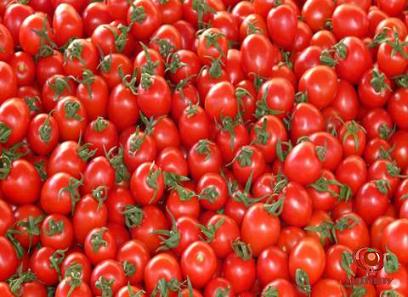 Benefits of Making Tomato Paste in a Dehydrator: Making tomato paste in a dehydrator offers several advantages compared to store-bought options. Firstly, homemade tomato paste allows you to control the ingredients and avoid additives or preservatives commonly found in commercial products. By using fresh, ripe tomatoes, you can enhance the flavor and nutritional content of the paste while tailoring it to your preferences. Dehydrating the tomatoes at a low temperature helps preserve their nutrients and natural sweetness, resulting in a more vibrant and flavorful tomato paste. Creative Uses for Tomato Paste: Tomato paste is a versatile ingredient that can elevate a wide range of dishes with its rich, concentrated flavor. In addition to traditional uses in pasta sauces, soups, and stews, tomato paste can be incorporated into marinades, dressings, and dips to add depth and complexity. Experiment with adding a spoonful of tomato paste to chili, curry, or casseroles for a burst of umami flavor. You can also mix tomato paste with herbs, spices, and olive oil to create a flavorful spread for sandwiches, pizzas, or bruschetta. Conclusion: Making tomato paste in a dehydrator is a rewarding and flavorful process that allows you to harness the essence of ripe tomatoes in a concentrated form. By selecting the best tomatoes, properly dehydrating them, and storing the resulting paste correctly, you can enjoy homemade tomato paste year-round. Whether you use it as a base for sauces, a flavor enhancer in recipes, or a creative ingredient in your culinary creations, homemade tomato paste adds depth and richness to dishes in a way that store-bought alternatives cannot match. So, roll up your sleeves, fire up the dehydrator, and embark on a journey of tomato paste-making that will delight your taste buds and elevate your cooking to new heights.
Benefits of Making Tomato Paste in a Dehydrator: Making tomato paste in a dehydrator offers several advantages compared to store-bought options. Firstly, homemade tomato paste allows you to control the ingredients and avoid additives or preservatives commonly found in commercial products. By using fresh, ripe tomatoes, you can enhance the flavor and nutritional content of the paste while tailoring it to your preferences. Dehydrating the tomatoes at a low temperature helps preserve their nutrients and natural sweetness, resulting in a more vibrant and flavorful tomato paste. Creative Uses for Tomato Paste: Tomato paste is a versatile ingredient that can elevate a wide range of dishes with its rich, concentrated flavor. In addition to traditional uses in pasta sauces, soups, and stews, tomato paste can be incorporated into marinades, dressings, and dips to add depth and complexity. Experiment with adding a spoonful of tomato paste to chili, curry, or casseroles for a burst of umami flavor. You can also mix tomato paste with herbs, spices, and olive oil to create a flavorful spread for sandwiches, pizzas, or bruschetta. Conclusion: Making tomato paste in a dehydrator is a rewarding and flavorful process that allows you to harness the essence of ripe tomatoes in a concentrated form. By selecting the best tomatoes, properly dehydrating them, and storing the resulting paste correctly, you can enjoy homemade tomato paste year-round. Whether you use it as a base for sauces, a flavor enhancer in recipes, or a creative ingredient in your culinary creations, homemade tomato paste adds depth and richness to dishes in a way that store-bought alternatives cannot match. So, roll up your sleeves, fire up the dehydrator, and embark on a journey of tomato paste-making that will delight your taste buds and elevate your cooking to new heights.


 Phone number:
Phone number:  WhatsApp Response:
WhatsApp Response:








